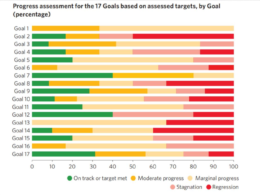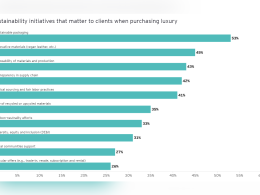As a major force in the maritime and logistics industry, Taiwan International Ports Corporation (TIPC) plays a vital role in shaping economic outcomes and the well-being of local communities and ecosystems. In this exclusive interview with ESG Post, Chairman Lee Hsien-Yi shares how the company’s sustainability journey is guided by a deep sense of responsibility, transparency, and continuous improvement. Fresh off receiving the Silver award for Asia’s Best Sustainability Report (Public Sector) at the 2024 Asia Sustainability Reporting Awards, Lee reflects on the challenges of cross-departmental data standardisation, the benefits of stakeholder trust, and the future of ESG reporting. He also offers thoughtful advice to peers aiming to improve their sustainability disclosures and gain recognition for their efforts.
Why does your company publish a sustainability report?
TIPC as a key player in the maritime and logistics industry, we recognise the profound impact our operation has on economy, local communities and the environment. We publish the ESG report to demonstrate the results of our commitment to corporate governance, social responsibility and environmental stewardship. Through disclosing our sustainability efforts, we aim to enhance transparency of governance, strongly engage with stakeholders, and showcase how we integrate international ESG principles into our business strategies. By editing ESG report, it also urges us to track our progress, identify areas for improvement, and align with international sustainability standards.
Which part of sustainability reporting did you find to be the most challenging?
The most challenging aspect of sustainability reporting lies in collecting and standardising data across diverse operational departments. Given the scale and complexity of TIPC’s operations, gathering accurate and comprehensive data on environmental performance, social participation, and governance practices requires robust internal systems and cross-departmental collaboration. Besides, It is a critical task to combine Sustainability context and Completeness under that the data complies with the latest international sustainable report standards such as GRI (Global Reporting Initiative),SASB(Sustainability Accounting Standards Board) and TCFD (Task Force on Climate-related Financial Disclosures),to enhance the credibility of corporate sustainability reports. Additionally, transforming corporate operating data information and sustainability promotion results into content that is easy for stakeholders to understand is a goal that companies need to continue to strive for and achieve when publishing their ESG reports.
How has your company benefitted from disclosing sustainability performance?
Disclosing our sustainability performance has provided multiple benefits. It makes stakeholders trust TIPC more by demonstrating our completely sustainable results and commitment to sustainable development. This transparency has enhanced our reputation and improved relationships with stakeholders across various industries. Internally, sustainability reporting not only cultivates our sustainability awareness and corporate culture, but also encourage departments’ goals to align with corporate ESG goals. Furthermore, regular assessment of our sustainability performance helps us identify material risks, optimise resource efficiency, and innovate to meet future challenges ahead.
What steps do you take to ensure that your sustainability report is reliable and credible?
To ensure the reliability and credibility of our sustainability report, we align with international standards such as GRI (Global Reporting Initiative) ,SASB(Sustainability Accounting Standards Board) and TCFD (Task Force on Climate-related Financial Disclosures). We also engage third-party verification to ensure the transparency and accuracy of the disclosed information. Our ESG report is compiled through cross-departmental collaboration, where data collection and verification to maintain accuracy and consistency. Each year, the sustainability report is reviewed by the Sustainable Development Executive Committee, and finalised following administrative procedures and the approval of the General Manager.
How do you think sustainability reporting will evolve in the next five years?
Over the next five years, sustainability reporting will become more accurate data-driven, verifiable information required ,international standardised, and forward-looking. Amid growing international trends, regulatory requirements and stakeholder expectations, companies will need to reveal deeply on climate risks, biodiversity impacts, and financial impact analysis data that may reflect reality and well risk controlled. Intelligent digitalisation will play a pivotal role in enhancing data collection and analysis, enabling real-time monitoring and predictive analytics. Additionally, integrated reporting, which connects financial and non-financial performance, will become the focus of sustainability reports.
What advice would you offer to other companies striving to enhance their sustainability reporting practices and earn recognition in initiatives like the Asia Sustainability Reporting Awards?
It might be the priority to emphasise transparency and stakeholder engagement. It is essential to align reporting framework with international standards to ensure comparability and credibility. Take it as necessary way to invest in robust data management systems that will improve accuracy and streamline reporting processes. To make sure that your company engage with internal and external stakeholders to identify material issues responded with your sincere regard and actively deliver your sustainability stories in authentic way. Lastly, pursue continuous improvement—regularly review performance, foster innovation, and remain resilient to evolve sustainability landscapes.





















